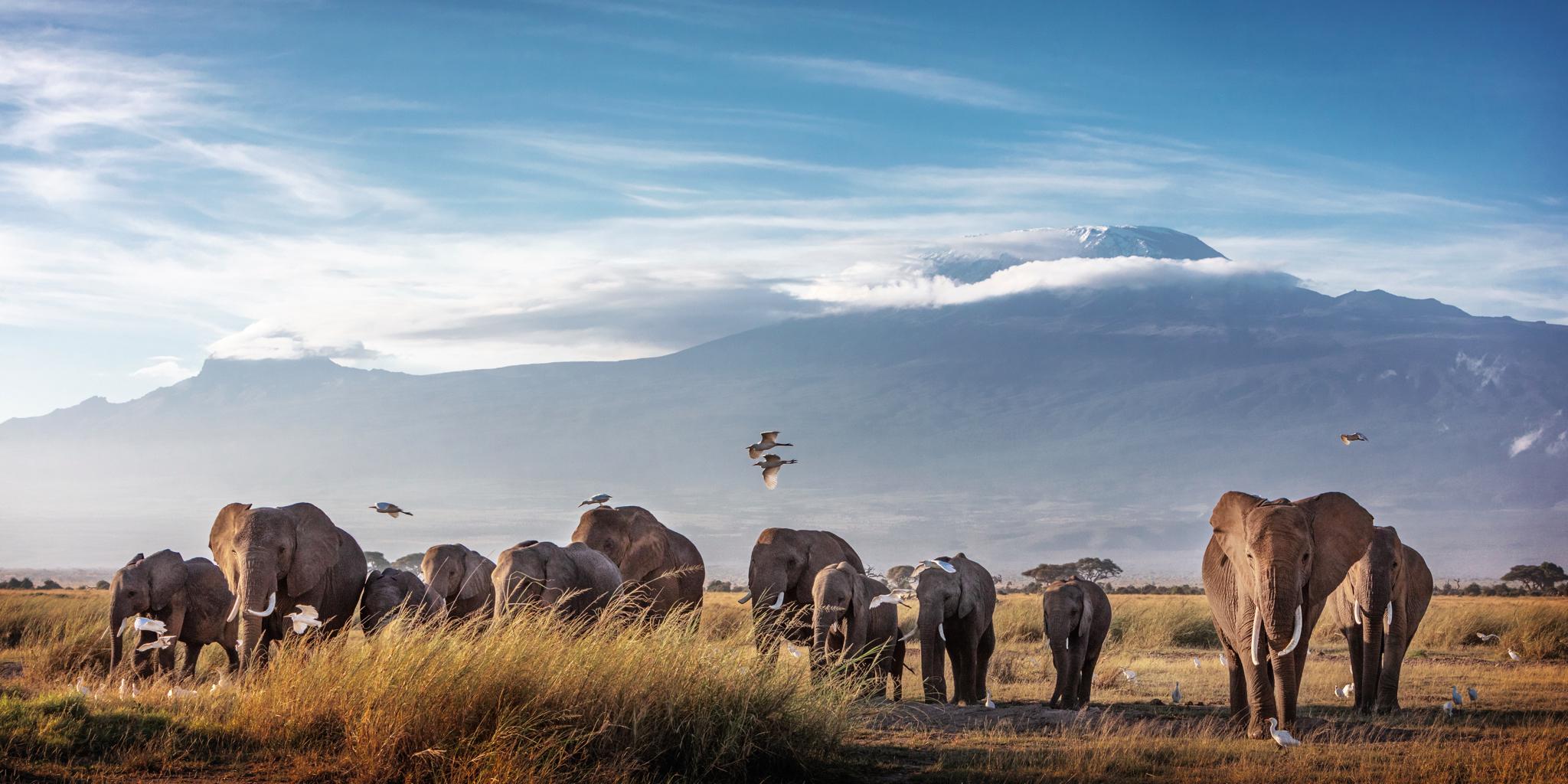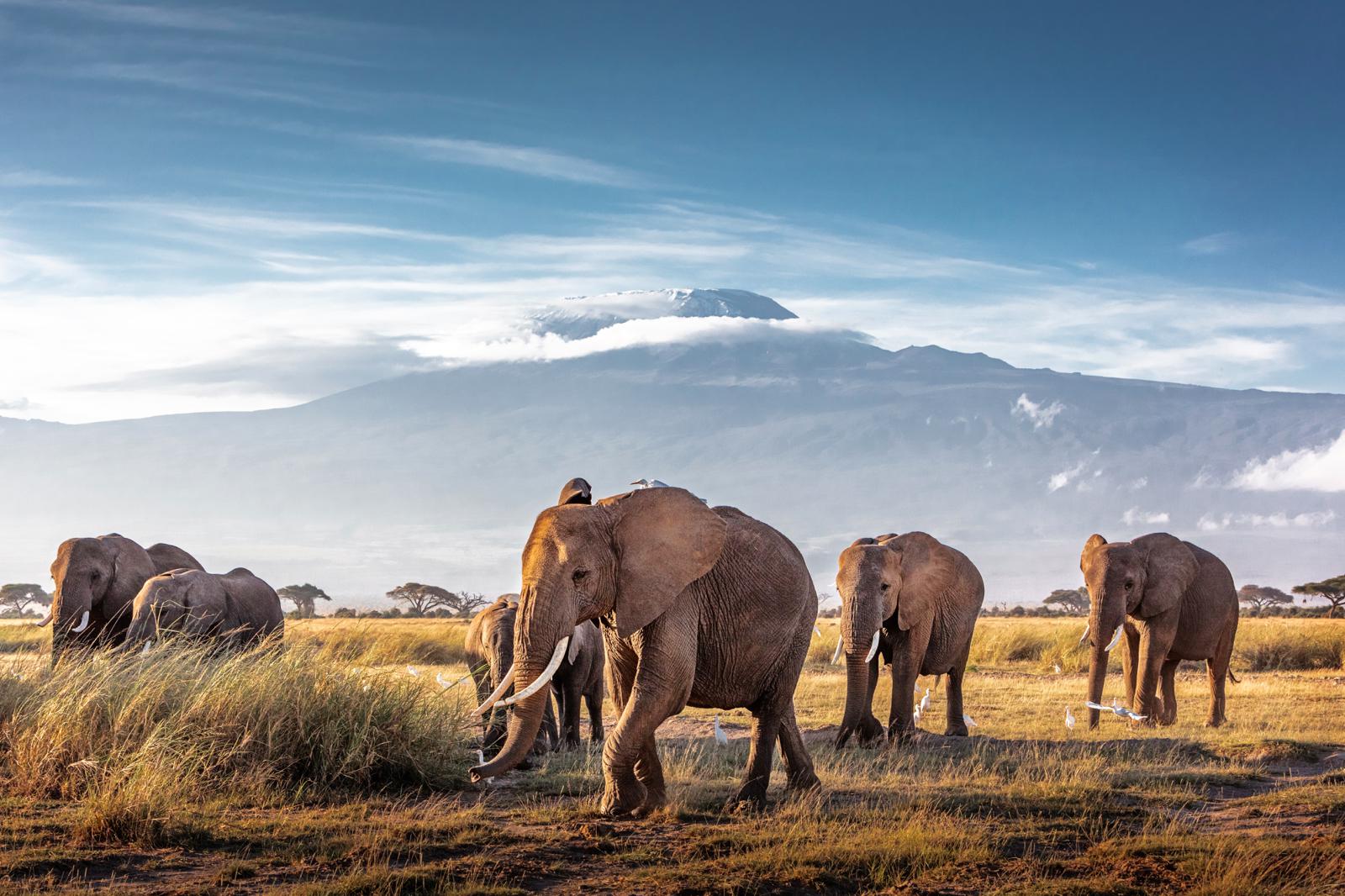
Keith Austin experiences the magic of Kenya three ways and discovers the rich diversity that typifies this extraordinary African nation

In partnership with
Keith Austin experiences the magic of Kenya three ways and discovers the rich diversity that typifies this extraordinary African nation
There’s a warning just outside my spacious tented room in the Fig Tree Camp safari lodge on the edge of Kenya’s Masai Mara National Reserve. It sits at the top of a steep embankment which slides at least six metres into the somewhat sluggish Talek River as it curves around the camp. The sign reads: ‘Don’t Go Beyond This Point’.
Given there is a massive dinosaur (aka crocodile) whiling away the afternoon wedged against the opposite bank and a bloat of hippopotami a little further along, this makes me wonder (a) why such a sign was needed in the first place, and (b) what genius came up with ‘bloat’ as a collective noun for hippos.
We are on day two of an eight-day National Geographic Journeys with G Adventures Kenya Safari Experience – day one being the meet-and-greet in Nairobi where you are welcomed by the guide and introduced to your fellow adventurers. Remembering their names shouldn’t be hard as there is a maximum of six people on the tour, which also means everyone gets a window seat in the pop-top 4WD LandCruiser.
In all, we stay at three lodges in three very different reserves or national parks: Fig Tree in the Masai Mara, Lake Nakuru Lodge in Lake Nakuru National Park, and Kilima Safari Camp in Amboseli National Park.
It’s a jam-packed itinerary with long distances between the parks, but the driving is made fascinating by the colourful cavalcade of Kenyan life that rolls by outside, enlivened by drink stops, lunch stops and, at one point, a visit to Cafe Ubuntu and craft centre, a G Adventures for Good-supported project which trains and creates local jobs for women.
We get to Fig Tree Camp in time for lunch after a bone- rattling journey over corrugated roads from Nairobi – a journey which will become infinitely more comfortable when the new freeway is finished.
The camp, like all our lodgings on the trip, is well- staffed, clean, and luxurious by Kenyan standards – we’d probably call it 3- or 4-star but that is not to be sniffed at when the wonders of the Kenyan wilderness are just over the threshold. At Fig Tree the accommodation is mostly in large tented rooms which overlook the river, Lake Nakuru is a little more low-key while Kilima is the cream of the crop with huge detached rooms, a viewing platform looking out to Mount Kilimanjaro and a big swimming pool.
After lunch at Fig Tree we return to the 4WD and head off into the Masai Mara, scattering the baboon families that cluster around the outskirts of the camp. As first game drives go, it’s not too shabby. We come across zebra, warthogs, buffalo, giraffe, gazelles, lions, a leopard and a family of hyenas as well as enough exotic birds to send even the most ardent twitcher barking mad.
The drive ends in a scene so perfect that I still question that it happened – and I was there. A couple of buffalo in the distance are dark shapes against a sun the colour of gold and a sky that looks like the kaleidoscopic bruise I once copped after falling off a scooter in Greece. Two of the iconic flat-topped acacia trees, also just black shadows against the fantasmagorical light show happening on the horizon, complete the cliche.
The next morning, we are up at oh-my-God-it’s-early o’clock to meet for a pre-dawn hot-air balloon ride across the sweeping plains of the Great Rift Valley. The best times to see the vast numbers of animals taking part in the annual Great Migration are July and August, but we do see elephants, a lone hippo, emus and some wildebeest. The main attraction, though, is the landscape and the re-emergence of the sun that we saw disappear with such magnificence the night before.
Lake Nakuru National Park, about 200 kilometres to the north, is a somewhat different kettle of wildlife thanks to the huge lake which is home, at certain times of the year, to tens of thousands of pink flamingo and other birdlife.
It is more undulating and wooded than the Masai Mara, and we come across Rothschild’s giraffes, a couple of rhinos and more buffalo than you can poke a spear at. Most of the flamingos are off sunning themselves further south but the few who are left are as weirdly beautiful as ever.
Finally, we head south east, back past Nairobi, to Amboseli National Park and a flattened landscape dominated by Mount Kilimanjaro. Known for its elephants (and there are plenty of them), this small park – it’s just 392 square kilometres – also boasts more than 400 bird species, including the grey crowned crane, the cheeky superb starling and the startlingly elegant secretary bird.
Our guide points out that, although Kilimanjaro is actually across the border in Tanzania, “we have the best views”. It’s hard to argue with that.
Latest Articles
Don't miss the latest from Luxury Travel
